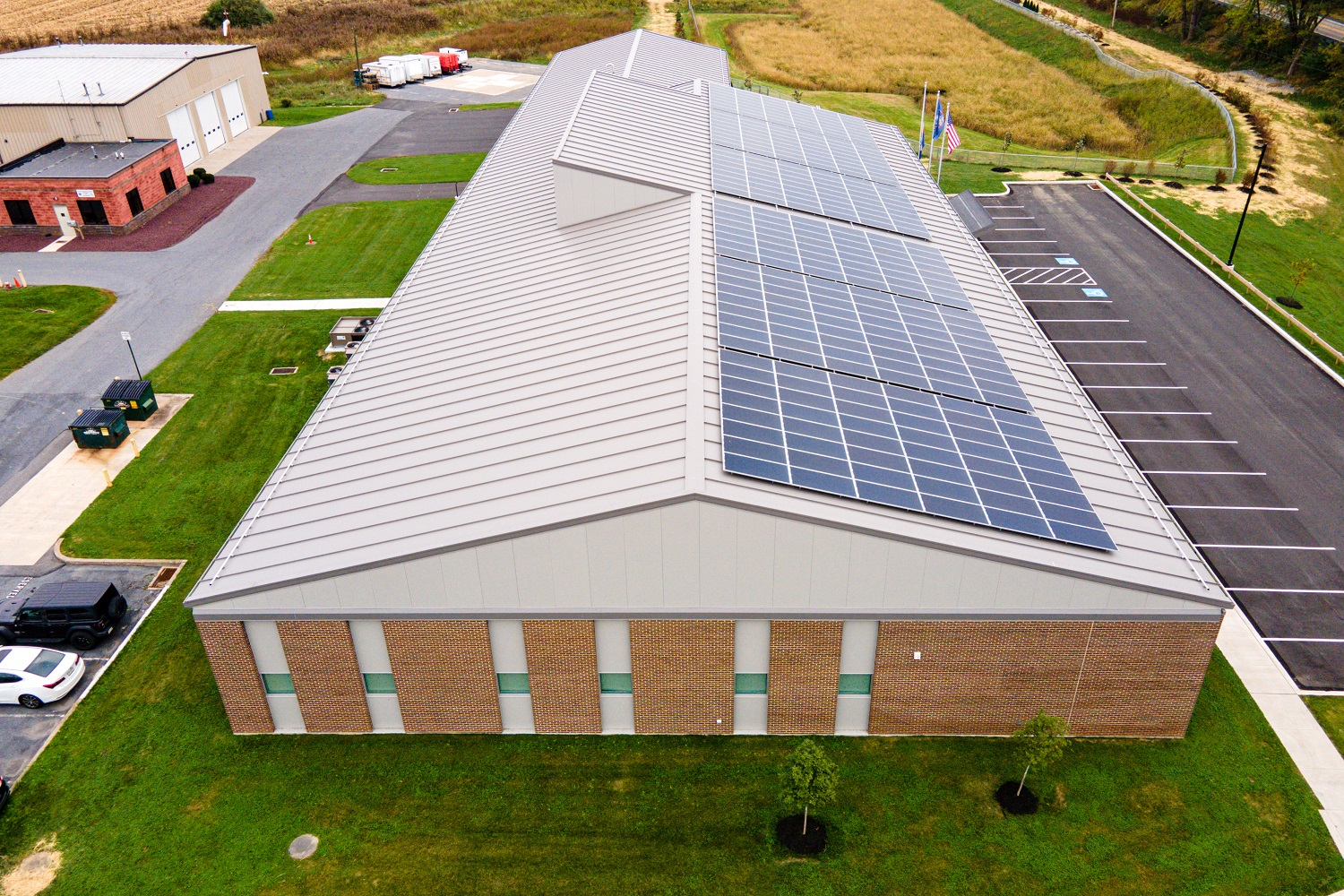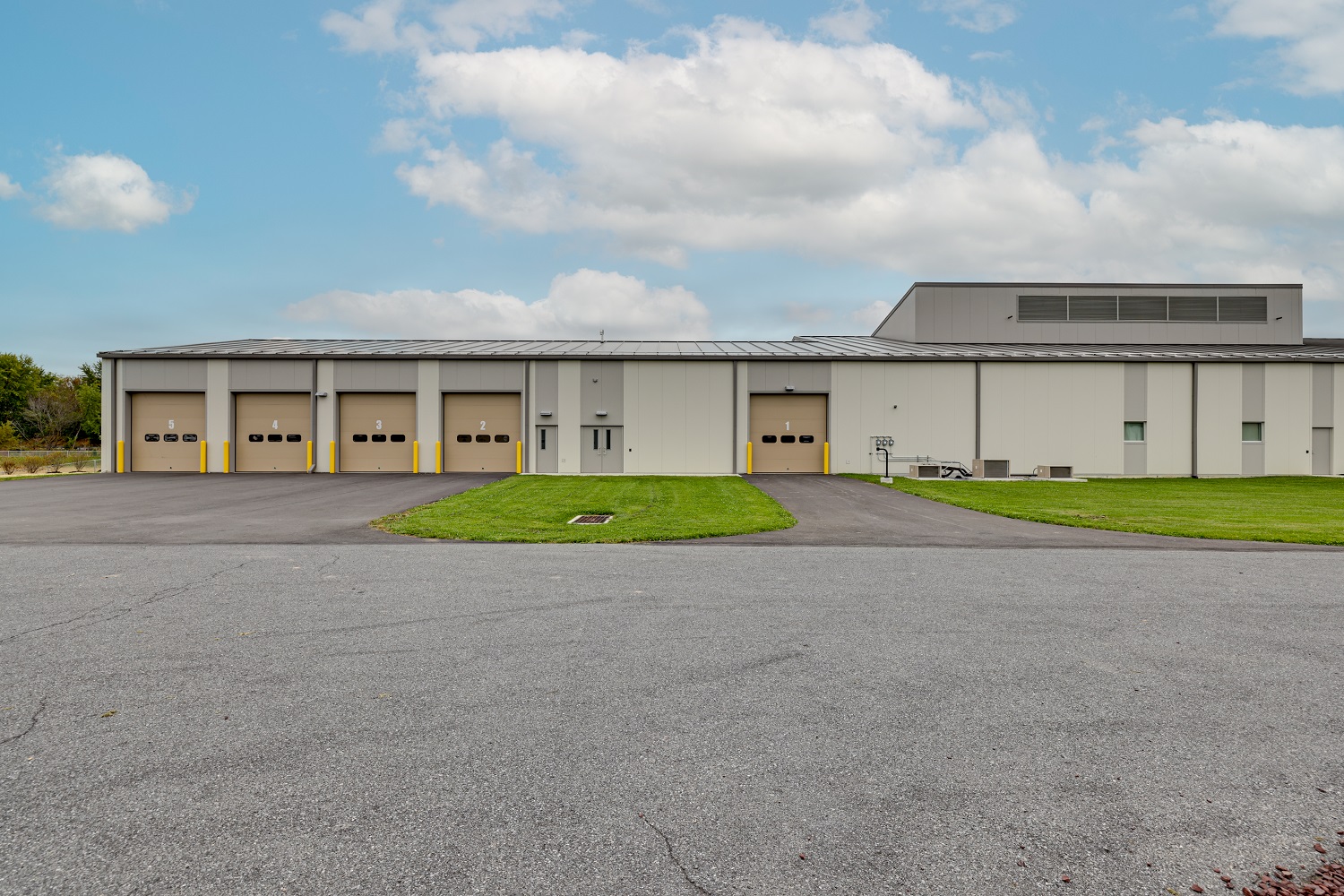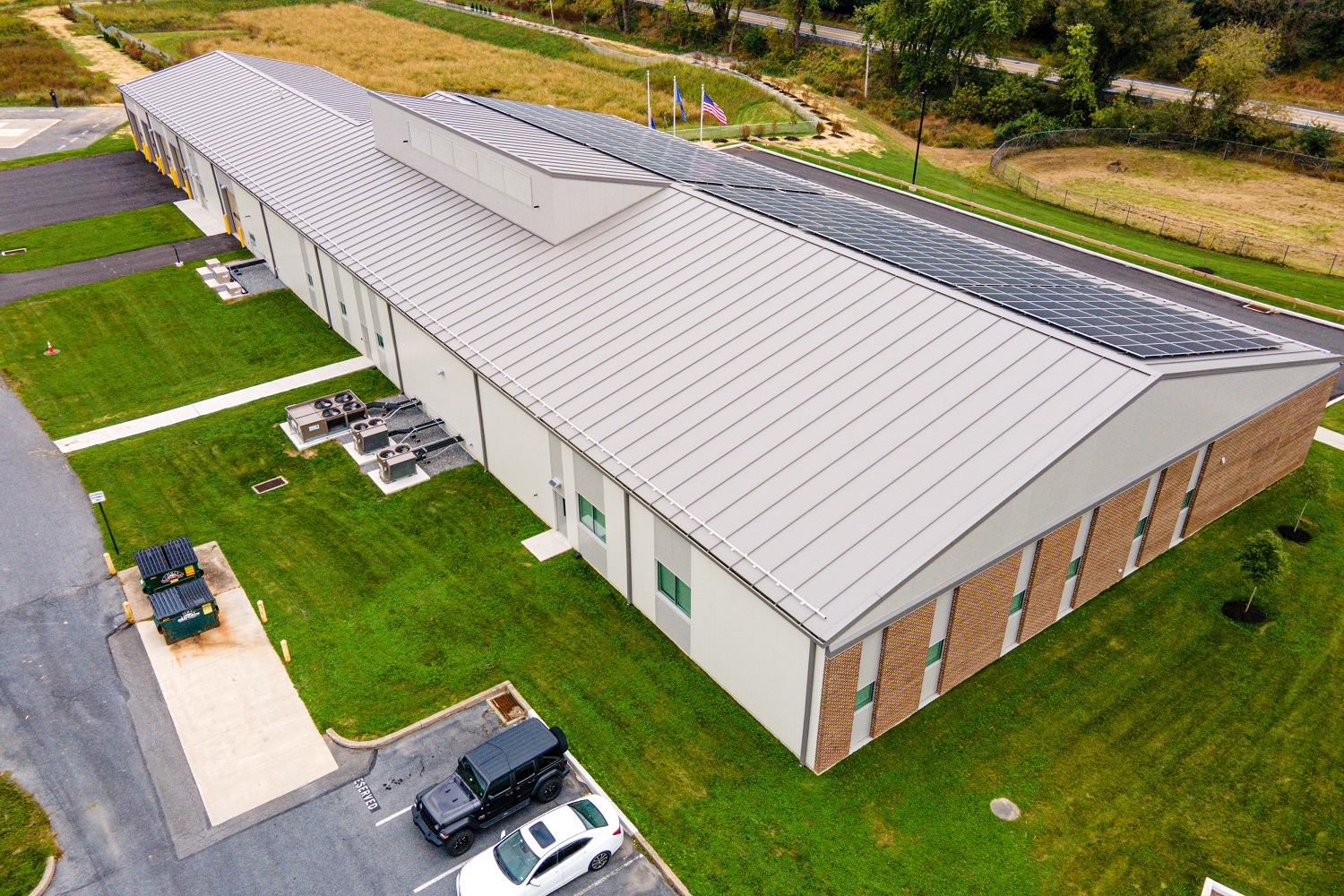Northampton County in Nazareth, Pennsylvania, had a forensics problem. Its Coroner’s Office had been housed in a cramped, outmoded space, one that did not lend itself to the sensitive operations such a facility should be capable of. Additionally, those who worked at the Coroner’s Office found themselves needing to drive around to local hospitals and medical centers to conduct its critical work.
The new Northampton County Forensic Center, an $11 million state-of-the-art facility constructed at 300 Gracedale Ave. in Upper Nazareth Township, solved these problems … and then some. As reported on LehighValleyLive.com, “The new 27,847-square-foot facility includes autopsy rooms with viewing areas to accommodate law officers and medical students; a digital forensic lab; lockers to secure evidence; a five-bay garage; and offices for the staff of county Coroner Zachary Lysek. It also includes a private reception room for family members coming to view their deceased loved ones.”
Builder/installer and longtime Metl-Span dealer, CHM Contracting, LLC, based in Leesport, Pennsylvania, along with project architect W2A Design Group and the general contractor,
Sordoni Construction, found the ideal building materials solution in Metl-Span 5” CF42R insulated metal roof panels and 4” CF42 insulated metal wall panels.
Performance and Installation Expertise
According to Steve Chando, Vice President of CHM Contracting, “The 5” CF42R allowed the building to be under roof in 12 working days, which then allowed other contractors to proceed with their work. Insulated metal panels, in general, are advantageous to the overall completion of a project because you have a complete weathertight system as soon as panels are set.”
Further, says Jake Kozak, CHM’s Project Manage/Estimator, “Since you have a 42-inch-wide panel that runs the full length of the roof, you get optimum coverage, which allows for a very quick install.” Some roof panels, in fact, were as long as 51 feet.CHM used a crane and a vacuum rig to set the roof panels, underscoring the magnitude of the engineering involved with the process.

Kozak continues, “Also of note, with a conventional building, the framing goes up, then the exterior sheathing goes up, followed by the air vapor barrier, and another layer of girts. There are just so many layers and so many people to coordinate, it just drags out the schedule and complicates installation. But with single-sourcing, like with this project, the exterior wall system can be installed with a single contractor, which is a huge advantage to everyone involved.”
Chris Devers, Sales Representative with Exterior Building Solutions for Metl-Span, adds that having one qualified contractor on the job, with the experience that CHM brings to the table, is key. “They do a great job,” he says. This wasn't something where just anybody could just come on-site and put this together. To have one contractor come in there and cover all the bases, from the exterior shell to the interior finish, it was incredibly impressive to watch.”
Additionally, in terms of the wall panels, the uncompromising ability for the insulated CF42 Metl-Span metal wall panels to integrate seamlessly with other aspects of the construction—for example, Airolite louvers, drop-in window units, overhead doors, and man doors—supported a cost-effective and relatively easy installation process.
Kozak shares that the louvers, in particular, worked out well for this project because CHM was able to install the Metl-Span panels and cut out afterwards, which kept the building weathertight while the crew was waiting on other contractors. Since the building was weathertight, CHM was able to come back and attend to additional detail afterwards.
As for additional benefits of the Metl-Span wall panels on the interior, some panels were exposed, and due to the nature of the building’s use, it was important to have a surface that's easily cleaned and maintained.
Moreover, the timely delivery of materials also allowed for a quick and efficient installation. In fact, the project was field measured in May 2020, installation started in June 2020 and the installation was complete by Oct. 1, 2020.
A Commercial Look for an Industrial Structure
Regarding the desired building aesthetic, with both the wall and roof panels, the design team was looking for a striated embossed type of finish. There were also complementary colors of wall panel, Smoke Grey, Sandstone, and Zinc Grey, which gave it an integrated look but with different color aspects.
For the Zinc Grey roof panels, they wanted the look of a standing seam metal roof application but with the performance of an insulated metal panel. “For the roof,” Chando says, “you’ve got both aspects—a good insulating high R value with the 5” panel, as well as the standing seams at all of the jointing applications.”
With the color scheme and textured panels, the end result was more of a commercial-looking structure as opposed to industrial, in spite of the fact that the building’s basic use is as a morgue. Kozak says, “It’s not a cold feeling building. It doesn’t look like a morgue when you drive by, which is something that was important to the design team. It sits right next to Gracedale nursing home, which is a fairly significant architectural feature in the area.”

Chando adds, “It’s in the middle of a field, on a piece of farmland, so they wanted it to look nice, nothing that looked like a farm building. It doesn’t look industrial. Rather, it looks like it’s part of the complex.”
Chando summarizes, “The finished Metl-Span installation is great example of how multiple finishes and textures of the same panel can produce a high-end architectural appearance, all while meeting the owner’s utilitarian needs.”
Project Details:
Project Name: Northampton County Forensic Center
Location: Nazareth, PA
Architect: W2A Design Group
General Contractor: Sordoni Construction
Installer: CHM Contracting LLC
Metl-Span Products:
Wall panels: 4” CF42 – Smoke Grey, Sandstone, Zinc Grey, 12,800 SF
Roof panels: 5” CF42R – Zinc Gray LG, (26,716 SF)
Related Stories
| Aug 11, 2010
9 rooftop photovoltaic installation tips
The popularity of rooftop photovoltaic (PV) panels has exploded during the past decade as Building Teams look to maximize building energy efficiency, implement renewable energy measures, and achieve green building certification for their projects. However, installing rooftop PV systems—rack-mounted, roof-bearing, or fully integrated systems—requires careful consideration to avoid damaging the roof system.
| Aug 11, 2010
Pella introduces BIM models for windows and doors
Pella Corporation now offers three-dimensional (3D) window and door models for use in Building Information Modeling (BIM) projects by architects, designers, and others looking for aesthetically correct, easy-to-use, data-rich 3D drawings.
| Aug 11, 2010
AAMA developing product-based green certification program for fenestration
The American Architectural Manufacturers Association is working on a product-based green certification program for residential and commercial fenestration, the organization announced today. AAMA will use the results of a recent green building survey to help shape the program. Among the survey's findings: 77% of respondents reported a green certification program for fenestration would benefit the product selection process for their company.
| Aug 11, 2010
Seven tips for specifying and designing with insulated metal wall panels
Insulated metal panels, or IMPs, have been a popular exterior wall cladding choice for more than 30 years. These sandwich panels are composed of liquid insulating foam, such as polyurethane, injected between two aluminum or steel metal face panels to form a solid, monolithic unit. The result is a lightweight, highly insulated (R-14 to R-30, depending on the thickness of the panel) exterior clad...
| Aug 11, 2010
AIA Course: Enclosure strategies for better buildings
Sustainability and energy efficiency depend not only on the overall design but also on the building's enclosure system. Whether it's via better air-infiltration control, thermal insulation, and moisture control, or more advanced strategies such as active façades with automated shading and venting or novel enclosure types such as double walls, Building Teams are delivering more efficient, better performing, and healthier building enclosures.






